Learn about what are blue steaks and how to cook them. We’ll discuss their safety and the best cuts of meat to use to achieve this ultra-rare meal. True high-end steak aficionados will appreciate the unique flavors and tenderness, but it is an acquired taste for some.
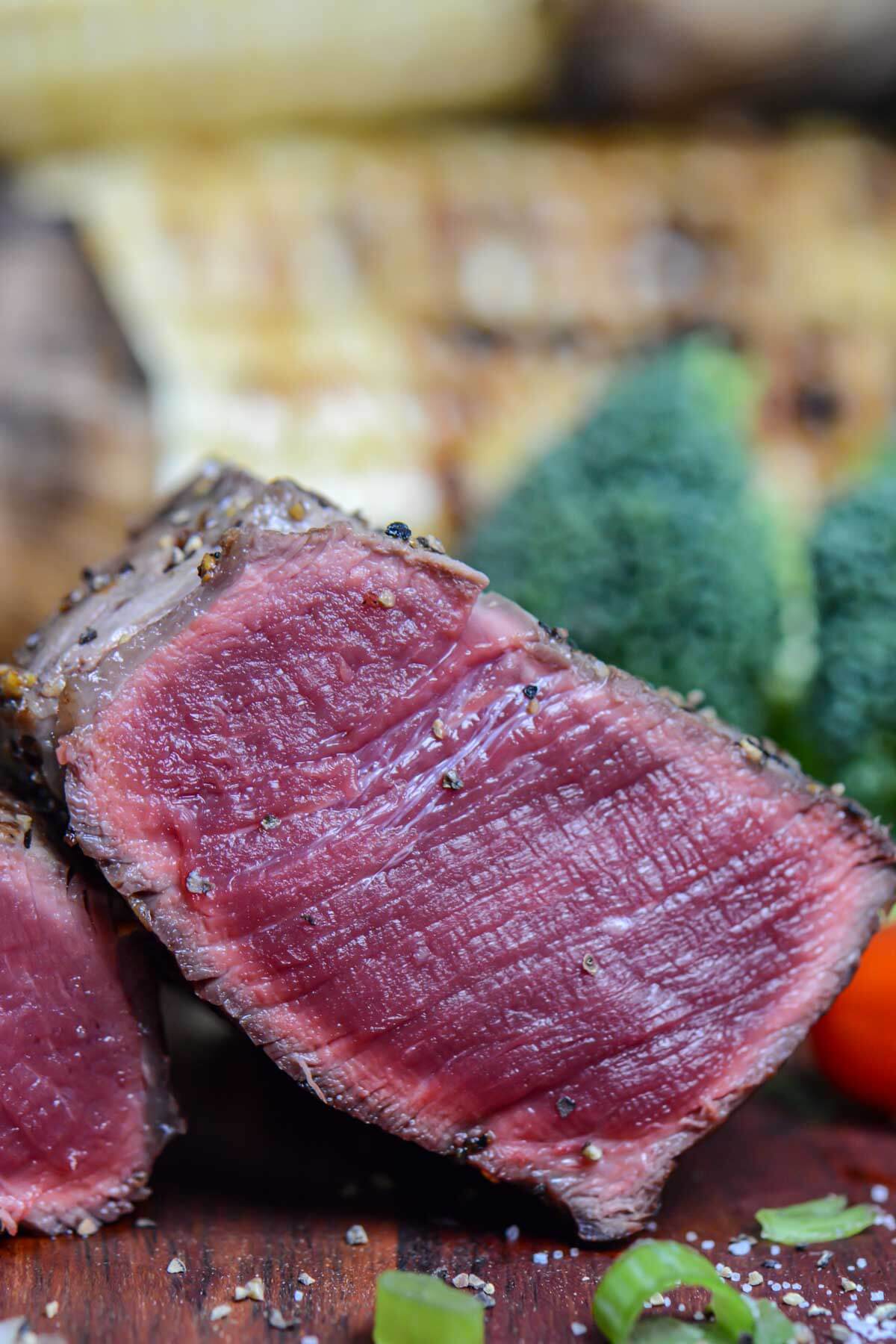
As you’re sitting in a steak restaurant, scrolling through the menu, you overhear a man asking for a blue steak on a nearby table.
You’re not a meat expert, so this “blue steak” expression might seem odd to you. So, naturally, the first question that pops into your head is:
What Is A Blue Steak?
Widely known as “bleu” steak, a blue steak is the very first stage you get while cooking your meat. The inside of the flesh is hardly cooked and shy from being raw. The outside is seared and looks like a regular steak.
Now that you know what a blue steak is, you might have more questions. For example, how to cook a blue steak? Why do they call it a blue steak? Are blue steaks and rare steaks the same? How does it taste? And is it safe to eat it to begin with?
We’ll give you the answer to all of them plus some more!
✔️ Best Cuts For Blue Steak
Perfectly cooking your steak is essential, but it’s not everything. Selecting the proper cut to cook a blue steak is just as important. A few minutes of cooking aren’t enough if the steak has too much fat, marbling, or connective tissue.
The result will be a fatty steak that’s not easy to chew or swallow. Trust us; you don’t want that. Nobody does.
Here are some great candidates and also consider prime vs choice before purchasing:
🔸Tenderloin – This long muscle is part of the loin primal cut and doesn’t get too much exercise, which is why it’s considered one of the most tender cuts. Try our reverse-seared smoked beef tenderloin for a classic grill recipe that will leave everyone impressed!
🔸Round Steak – Coming from the round primal cut, you’ll love the tenderness and subtle marbling of this steak. You might find it under a different name, such as London Broil, or Beef Round.
🔸Filet Mignon – A smaller cut take from the tenderloin in the short loin area, filet mignon has a melt-in-your-mouth texture, making it perfect for blue steak. See more differences in our tenderloin vs filet mignon guide.
🔸Flat Iron – With a rectangular shape, even thickness, and moderate marbling, flat iron is an excellent choice for high-heat cooking methods like grilling and pan searing. These grilled herb-crusted flat iron steaks make a fast BBQ with amazing results.
🔸Sirloin Tip – Taken from the sirloin roast, this cut is moderately tender and slightly fattier compared to filet mignon. In the sirloin vs filet debate, the first wins in terms of price. It’s excellent when cooked properly and delivers a beefier flavor, steak aficionados will love.
❌ Cuts To Avoid
On the other end of the spectrum, these cuts should be avoided if you want a blue steak:
| Cut of Meat | Explanation |
|---|---|
| T-Bone | Uneven surface with tough meat that needs more cooking time. |
| Flap and flank steak | Too thin for a blue steak; they’ll be uncomfortably chewy |
| Ribeye | Too much marbling; will taste raw after cooking. |
| Wagyu beef | The highest quality meat in the world isn’t suitable to be cooked as blue because of the high marble amount. |
🥩 Ingredients
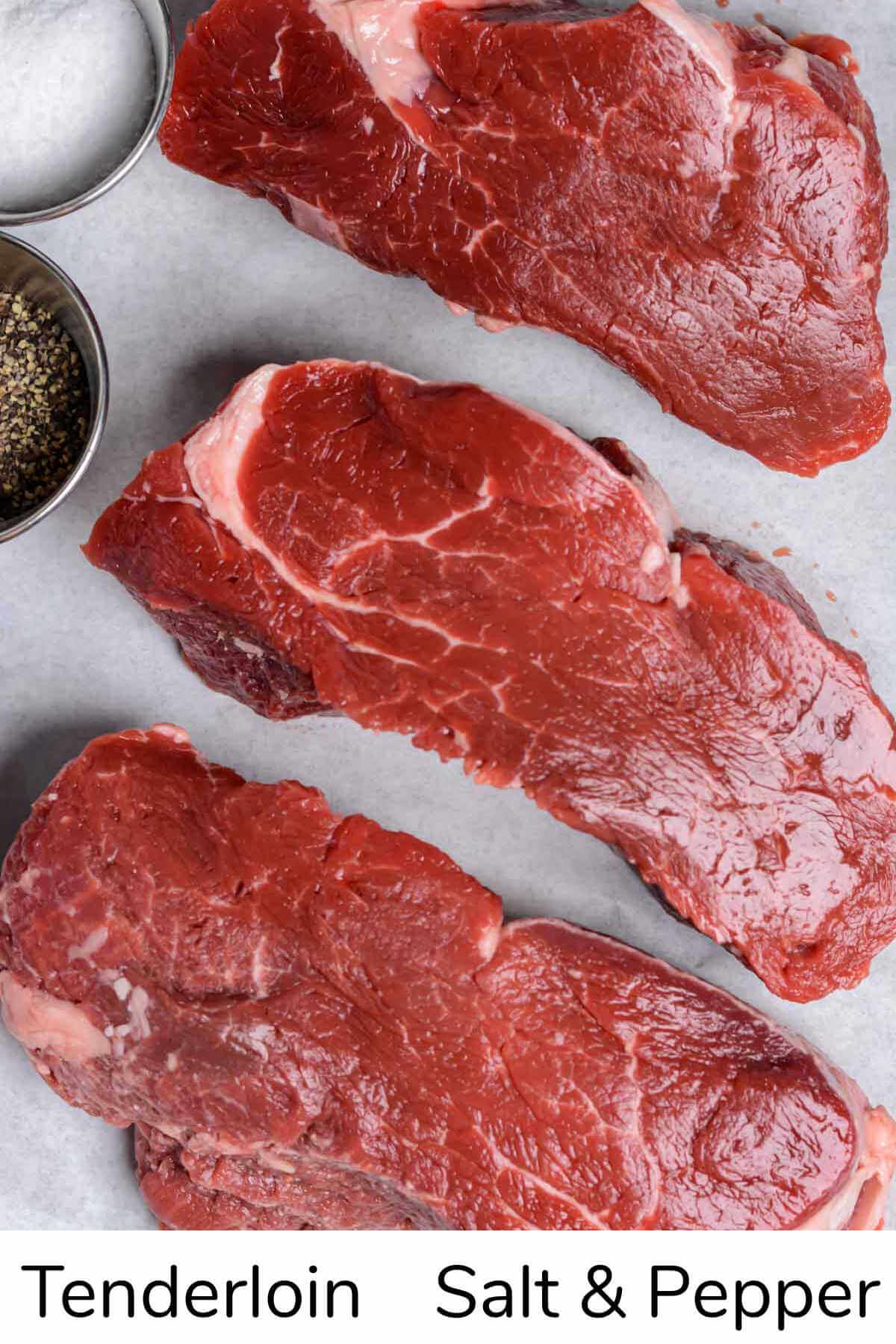
🛒Steak – As discussed above, several cuts can be used for blue steak (tenderloin, round steak, filet mignon, flat iron, and sirloin tip). We used tenderloin this time.
🛒Salt & Pepper – All blue steak cuts are some of the most prized and for this fast cooking method I recommend the most basic seasoning: salt and pepper. It will highlight the natural flavor of beef.
🔥 Instructions
Now for the exciting part, how to cook the blue rare steak! Follow these simple steps:
👉Step 1: Get your steak out of the fridge and let it rest for around half an hour. All meat cooks better when it’s close to room temperature. Don’t rush and skip this step, or you’ll end up with an uncomfortably cold interior of the steak.
👉Step 2: Blot or pat your steak with paper towels to ensure that any excess moisture comes out. Excess moisture will lead to uneven cooking of your steak.
Note: This may not be a problem with other types of steak because the water will evaporate with the heat. However, the little time you cook blue steak may not be enough to eliminate all those excess fluids.
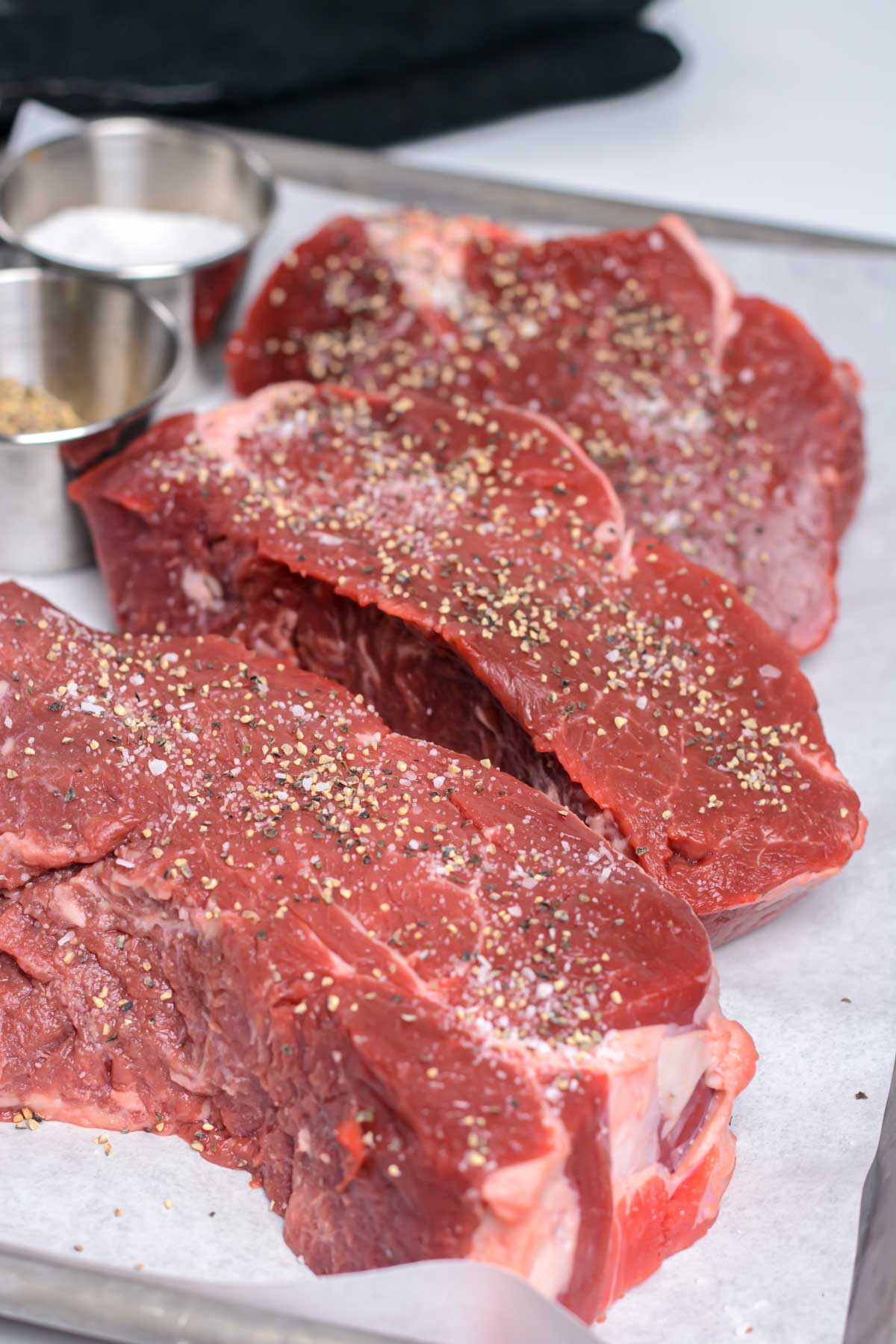
👉Step 3: Season your steak with salt and black pepper. You may brush some olive oil on the surface of your steak for some additional char, but it’s optional.
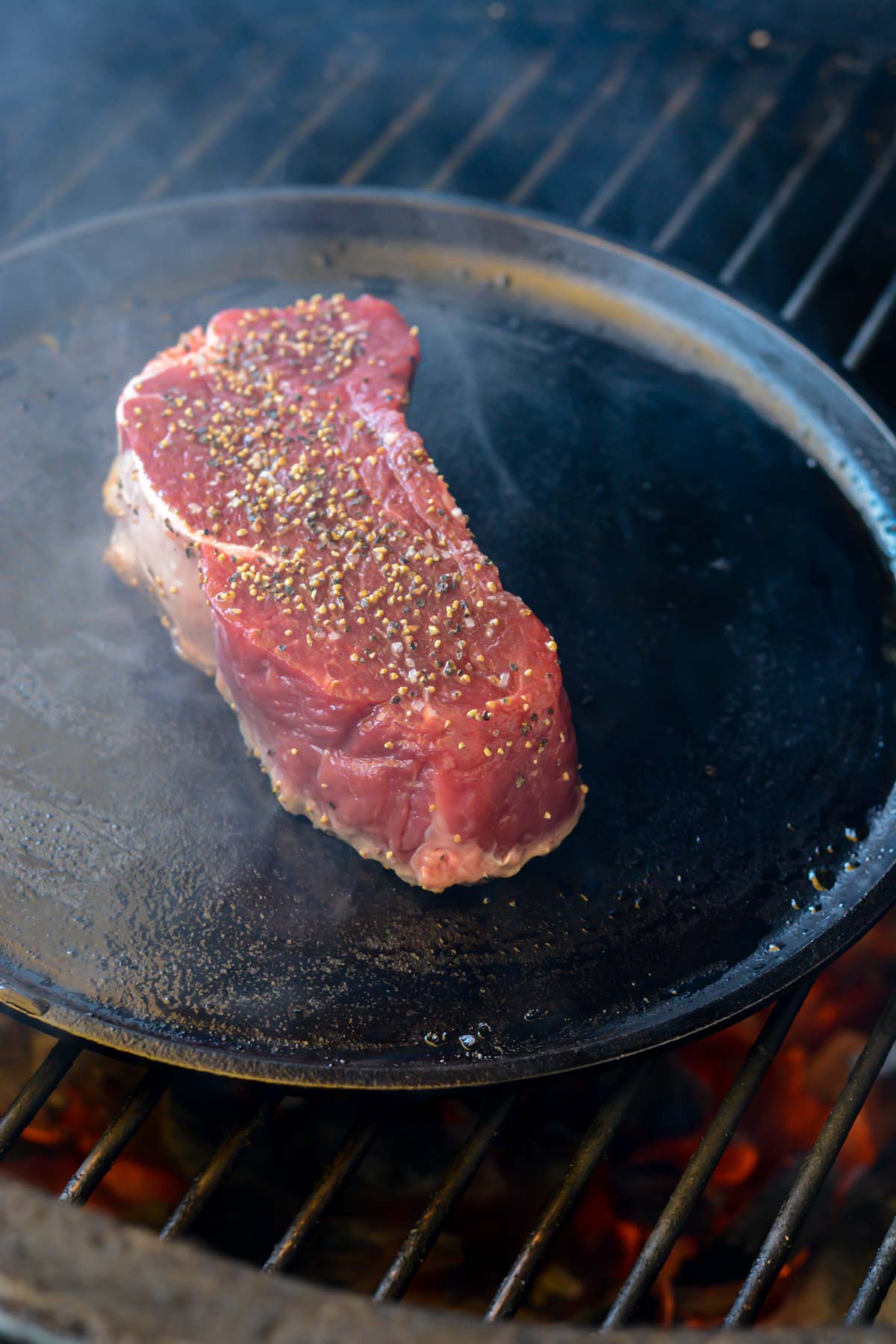
👉Step 4: Heat the grill to 400-450°F and add the cast iron skillet. Set the burners to high if using a gas grill. Add a little bit of olive oil. Once the oil is hot and starts to smoke, you can add the seasoned steak.
👉Step 5: Leave the steak in the same position on the same side for exactly 1 minute. You may be tempted to press on it and hear that sizzle, but that may cause some uneven cooking.
👉Step 6: After a minute, flip the steak to the other side using clean and dry tongs. Let it cook for another minute.
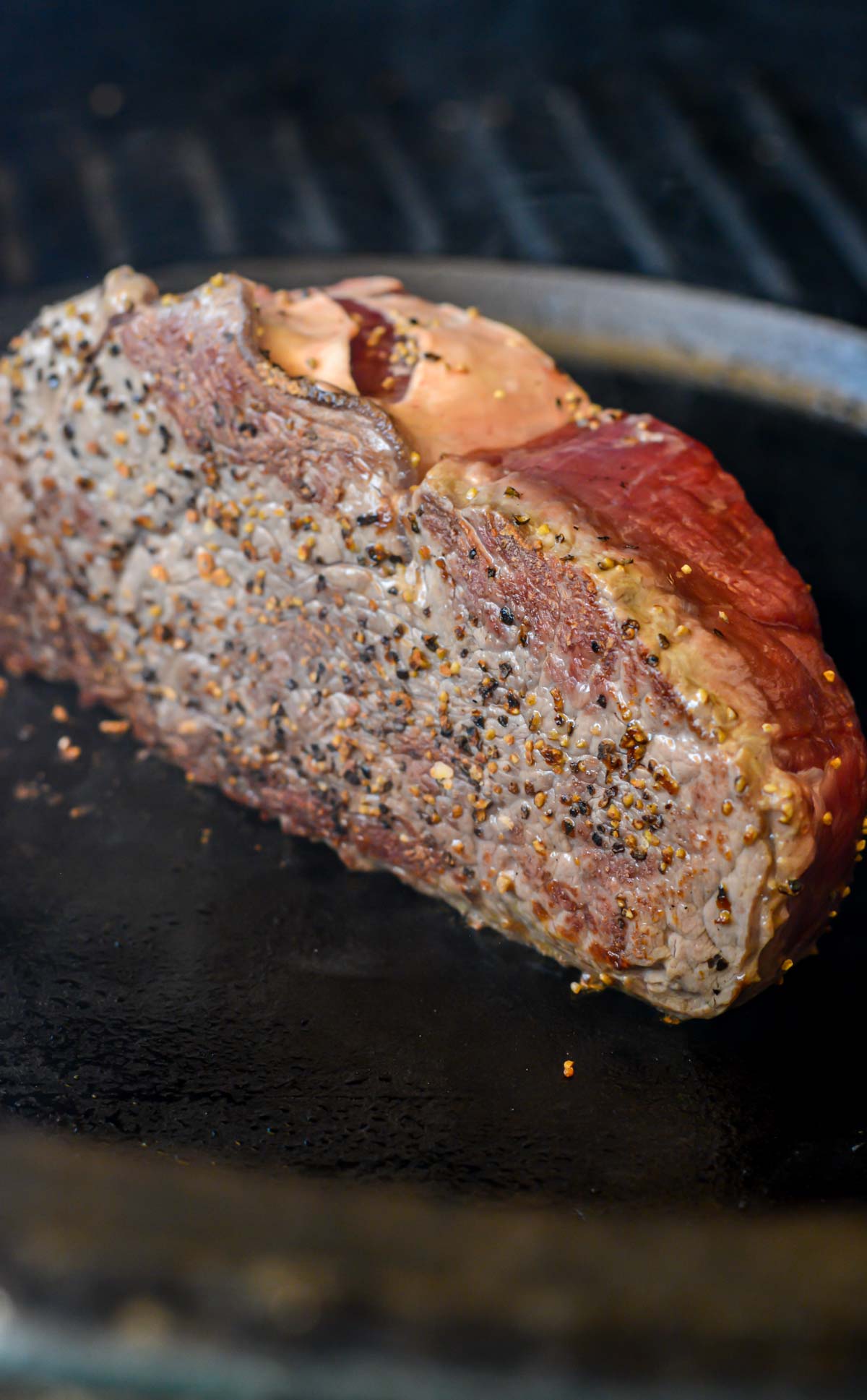
👉Step 7: At this point, you’ll notice that both sides are cooked, but the edges of the steak are still somewhat raw. You’ll need to “roll” it on its edges until the outside of the steak develops a sear all over.

👉Step 8: Once the steak is seared on all sides, remove the pan from the heat source and use an instant-read thermometer to check the temperature. It should read between 115°F and 120°F. Put out the coals of the charcoal grill safely.
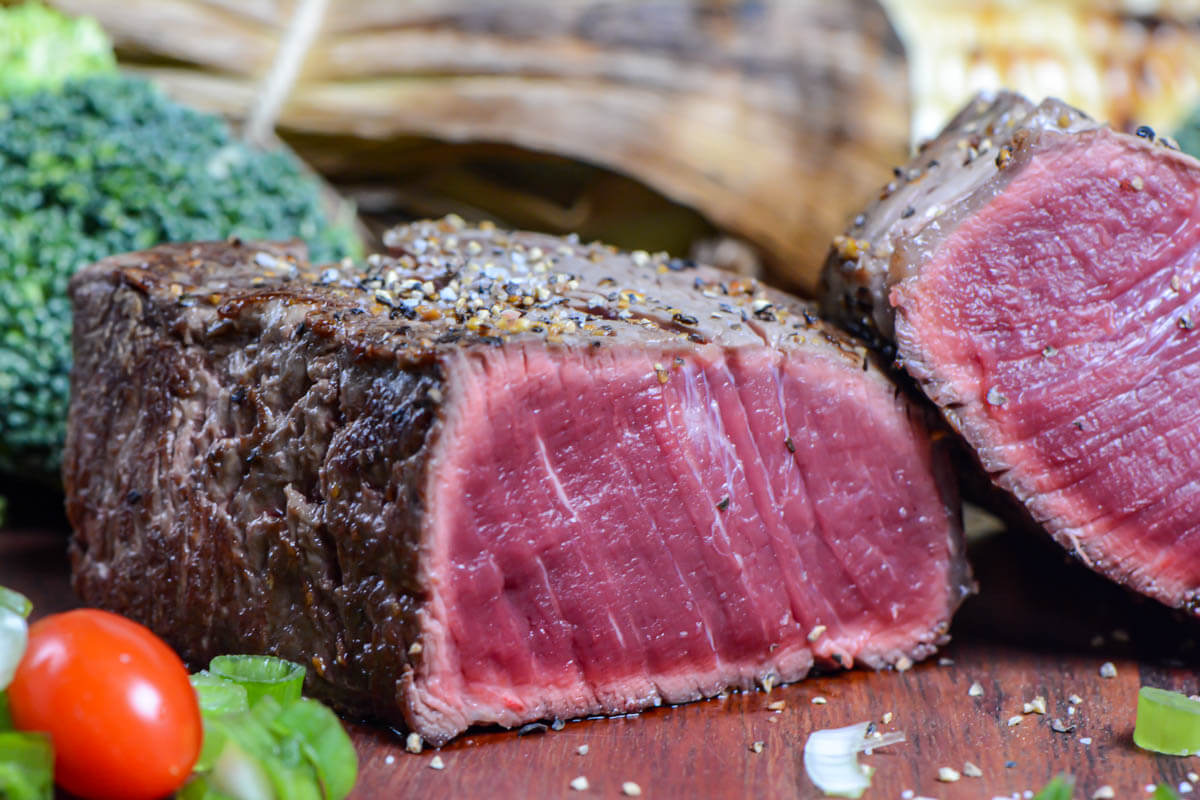
As Chef Gordon Ramsay says: Serve!
Tip: It’s common to let a steak rest to allow the liquids to redistribute throughout it for that juicy bite. You don’t need to do that with a blue steak because it doesn’t get hot enough to squeeze out the liquid.
Why Is It Called “Blue”?
We’ll be honest here. It’s hard to get an exact answer, but we know some of the reasons behind the naming. Here are some theories, although not all of them are viable.
Reason #1: Oxygenated Blood
Some people say that the meat is blue when it gets cut for the first time. However, once the meat is exposed to air for a few minutes, the blue color turns into a deep red.
That theory is derived from the oxygenated blood in humans. Our veins look blue because the blood doesn’t have oxygen, while our arteries are red because the blood has oxygen. This sounds logical at first, but it also means that when you cut a blue steak open, it leaks blood.
That’s where this theory proves wrong because your cooked meat doesn’t leak blood. When you cut it, what comes out of your juicy steak is myoglobin, not blood.
We’ve also got live proof that blood has nothing to do with it. Keep an eye on the blue steak when it gets cut open in this video. It’s red as soon as it gets cut.
Reason #2: The Blue Sheen
This theory states that the steak oils have a blue sheen, making it appear as if the steak’s interior is cold or blue.
So, it’s just giving a fancy name to the steak based on what some people might see as a blue sheen. We’re not very convinced with that one, are you?
Reason #3: The French Au Bleu
This is the most viable theory, in my opinion. In French culture, cooking some types of fish that have just been fished out is called Au Bleu.
It’s especially common in cooking trout fish, using a mixture of seasonings and vinegar. This method is called “Au Bleu Trout.”
When you hardly cook a steak to the point where it still seems raw, the term blue or “bleu” steak is used.
Last but not least, blue steak doesn’t have anything in common with blue cheese. They do pair well, though!
Are Blue and Rare Steaks the Same?
Rare steaks differ from blue steaks in the cooking category, but they’re very close. Eaters who are new to steak may not be able to tell the difference between both.
A rare steak’s center is around 75% red and 25% pink. A blue steak is considered an “extra rare” steak where the center is almost entirely red.
You can always check a steak chart to know the differences between the types of steaks and what you should see when you cut them open.
What Is A Black And Blue Steak?
A black and blue steak is very similar to a blue steak as it uses the same cuts of beef and is cooked to a rare doneness level. The main difference is the cooking method.
The black and blue steak will have a charred exterior, not just seared like a blue steak.
You might find black and blue steak called Pittsburgh blue steak or Pittsburgh style steak.
It is believed the term Pittsburgh steak originates in the industrial era. Steel mill workers in the Pittsburgh area would use the high heat produced by blast furnaces to cook steaks fast since they only had 30-minute lunch breaks.
♨️ How To Cook A Black And Blue Steak
- Prep the steak as you would when making blue steak (see Instructions above) and let it sit on the counter for 30 minutes before grilling.
- Heat the grill to 400-450°F.
- To quickly char the outside of the steak, you need to cook it over direct heat.
- If you have any fat trimmings from the steak, place them around the meat directly on the grill grates. If your steak was a filet mignon or another lean cut, you can use butter instead of fat trimmings.
- This will cause flare-ups which is exactly what you need to char the exterior fast while keeping the inside raw.
- Sear each side for 1 minute, then do the same for the edges. Remove from the grill when the internal temperature of the steak is between115°F and 120°F.
Is It Safe to Eat a Blue Steak?
With all that “shy from being raw” talk, is it even safe to consume a blue steak?
Let’s pause for a minute and ask: why do we even cook food to begin with? Why shouldn’t we just consume it raw?
The point of cooking something is eliminating the harmful bacteria (especially E.Coli) using heat, making it easier to digest, plus adding some spices and seasonings to please our taste buds.
The few minutes of high-temperature searing are more than enough to kill the bacteria on the surface of the meat.
A correctly cooked blue steak isn’t only safe to eat, it’s also a tasty meal for its dedicated fans.
What Does a Blue Steak Taste Like?
So, you’re about to take that first bite. What taste should you expect?
The first half of your bite will feel relatively normal. You’re biting into that brown-seared, well-seasoned exterior that doesn’t differ from any other steak.
The new experience comes when you get to the “bleu” interior. The sudden transition from warm and seasoned meat to a very cool center may take you by surprise.
Some people describe it as spongy without that juicy bit you get from biting into a medium-rare steak, for example.
The taste is unique, but it’s not for everyone. Just like black coffee with no sugar, it has its dedicated fans who think it’s the best steak out there.
Generally, not every meat lover will enjoy this right away. It can take some time, as this is an acquired taste.
More Steak Recipes and Comparisons
- New York Strip vs Ribeye
- Ribeye vs Sirloin
- Ribeye vs Porterhouse
- Prime Rib vs Ribeye
- Can You Grill Frozen Steak?
- Flank vs Skirt Steak
- Porterhouse vs T-Bone Steak
- How to Tell if Steak Has Gone Bad
- Grilled Marinated Ranch Steak
- Grilled Ribeye Cap Steak
- Grilled Skirt Steak
- Grilled Teres Major Steak
- Grilled Marinated Steak Tips
- Grilled Porterhouse Steak With Herb Butter
- Grilled Sirloin Steak With Chimichurri
- Grilled T-Bone Steak With Bourbon Salt
Related Recipes
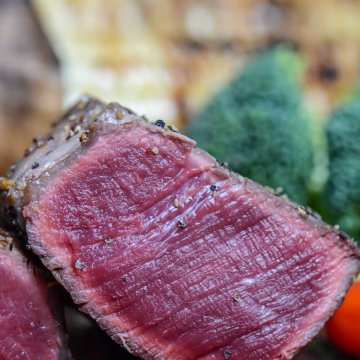
How to Cook Blue Steak
Equipment
- Cast Iron Skillet
- 4 Tongs
Ingredients
- 2 Tenderloin Steaks filet or sirloin can be substituted
- salt and pepper
- olive oil
Instructions
- Get your steak out of the fridge and let it rest for 30 minutes. Don’t rush and skip this step, or you’ll end up with an uncomfortably cold interior of the steak.
- Pat dry the steak using paper towels that any excess moisture comes out. Excess moisture will lead to uneven cooking of your steak.
- Season your steak with salt and pepper. You may brush some olive oil on the surface of your steak for some additional char, but it’s optional.
- Heat the grill to 400-450°F (the higher the temp, the better) and add the cast iron skillet. Add a little bit of olive oil. You can add the steak to the skillet once the oil is hot and starts to smoke.
- Leave the steak in the same position on the same side for exactly one minute. You may be tempted to press on it and hear that sizzle, but that may cause some uneven cooking.
- After a minute, flip the steak to the other side using clean and dry tongs. Let it cook for another minute.
- At this point, you’ll notice that both sides are cooked, but the edges of the steak are still somewhat raw. You’ll need to “roll” the steak on its edges until it develops a sear all over.
- With all the sides seared, remove the pan from the heat source and use an instant-read thermometer to check the temperature of the steak. It should read between 115°F and 120°F.
- Serve immediately. Blue steak doesn't need to rest.
Notes
Nutrition

Ginny Collins is a passionate foodie and recipe creator of Savor and Savvy and Kitchenlaughter. Indoors she focuses on easy, quick recipes for busy families and kitchen basics. Outdoors, she focuses on backyard grilling and smoking to bring family and friends together. She is a lifelong learner who is always taking cooking classes on her travels overseas and stateside. Her work has been featured on MSN, Parade, Fox News, Yahoo, Cosmopolitan, Elle, and many local news outlets. She lives in Florida where you will find her outside on the water in her kayak, riding her bike on trails, and planning her next overseas adventure.





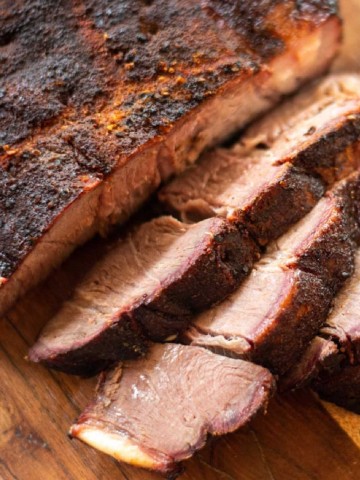
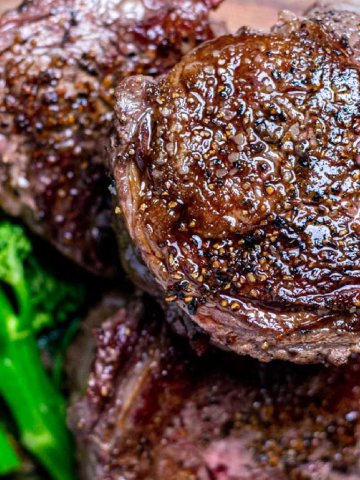
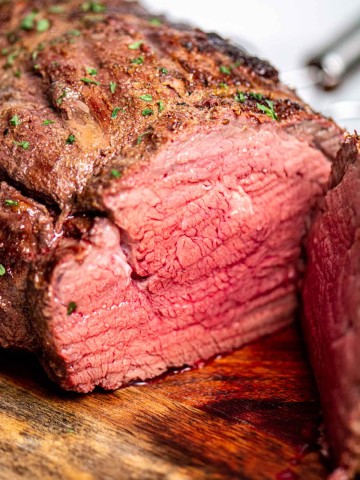

Leave a Reply